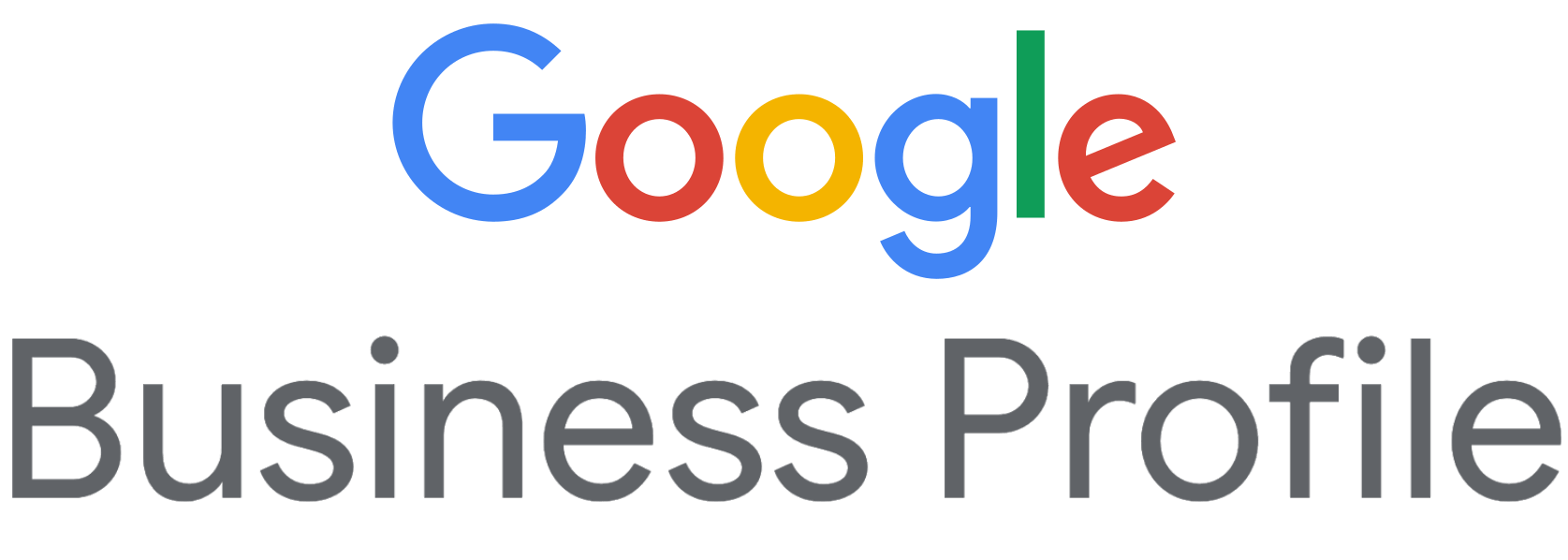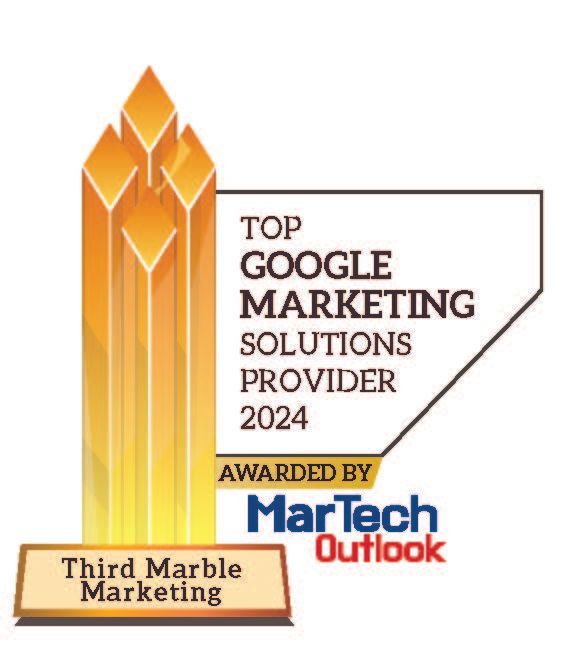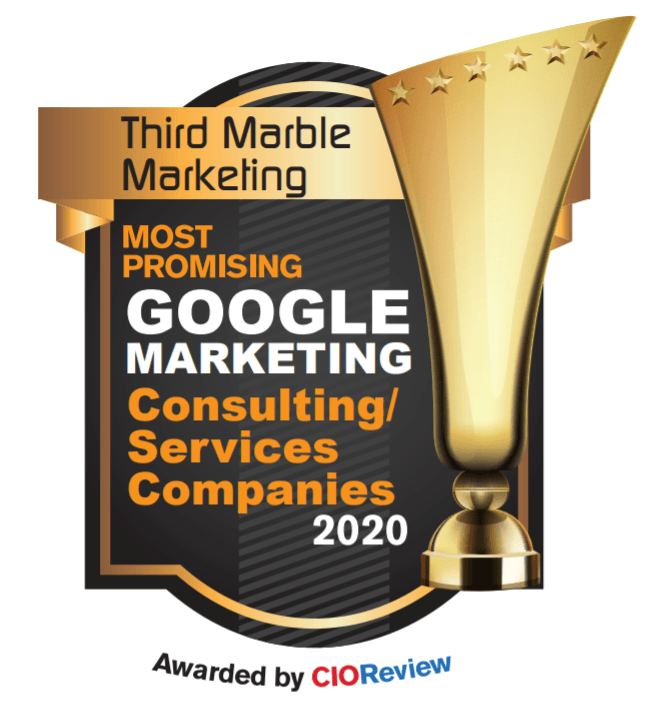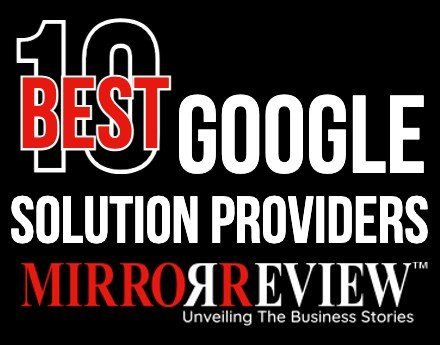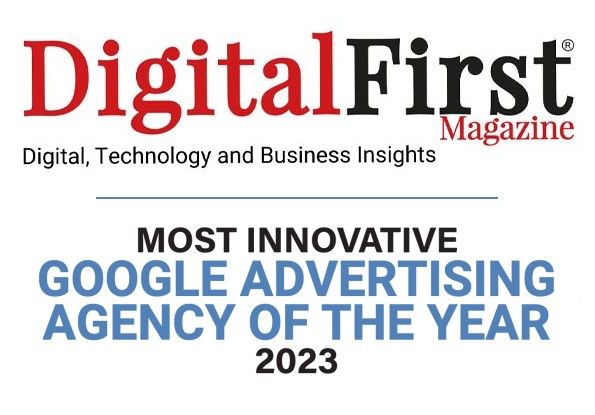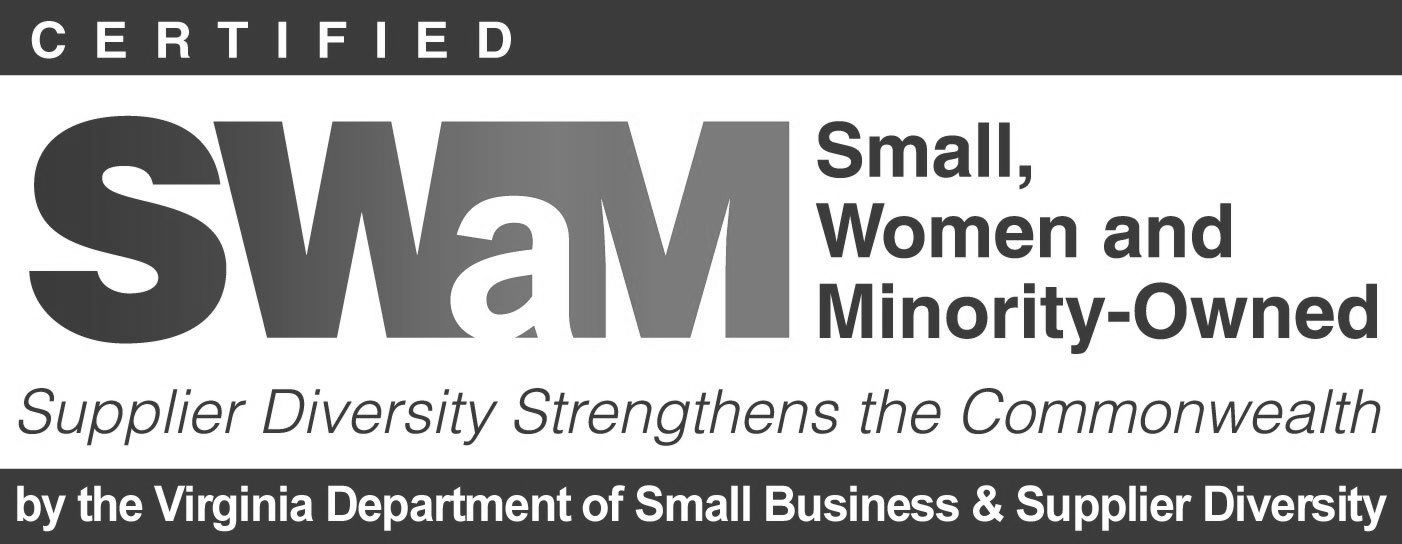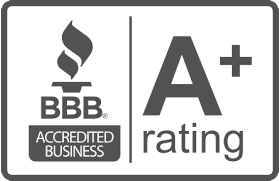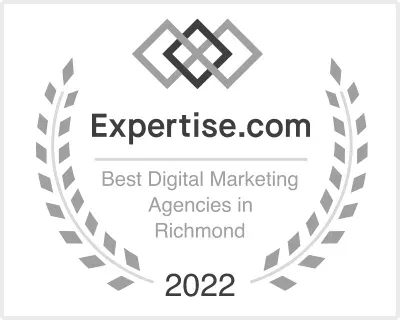Free Conversion & SEO Advice for Service Pages
GIVE CUSTOMERS WHAT THEY WANT TO MAKE A BUYING DECISION
The Critical Importance of Service Page Design on Your Website!

Small business owners and managers … the content of your service pages will determine your company’s search engine rankings and success in converting website visitors to paying customers. With those two payoffs, clearly customer-centric service page design is a digital marketing “must”.
So, in this piece we’ll present premier profiles of service pages that deliver what customers seek. The objective is to provide an overview of service pages best practices to help strengthen your internet marketing decisions.
Note: A study by Whitespark reveals that the top Google local organic ranking factor is a
Dedicated Page for Each Service.
What Are Service Pages … and Why You Must Care
Service pages appear on your business website and ideally present a path of information and motivation that leads to the potential of a sale. Your website serves as the stand-in for the “concierge” who greets prospects in person at your place of business ... identifies needs and directs them to appropriate solutions.
The difference, of course, is the absence of a live company representative. So, your service pages must be constructed to invite orderly next steps for your website visitors to identify the details of your offerings … with compelling demonstrations and evidence of how one or another will satisfy their needs.
You’ve heard the term “landing page”. Essentially that’s synonymous with service page meaning where a searcher will land on your website in response to a specific search question. You’ll want to feature a landing page dedicated to each product/service you offer. If you have multiple offerings, you may choose to streamline choices under a dropdown box on your home page.
Here’s an example from the TMM home page.
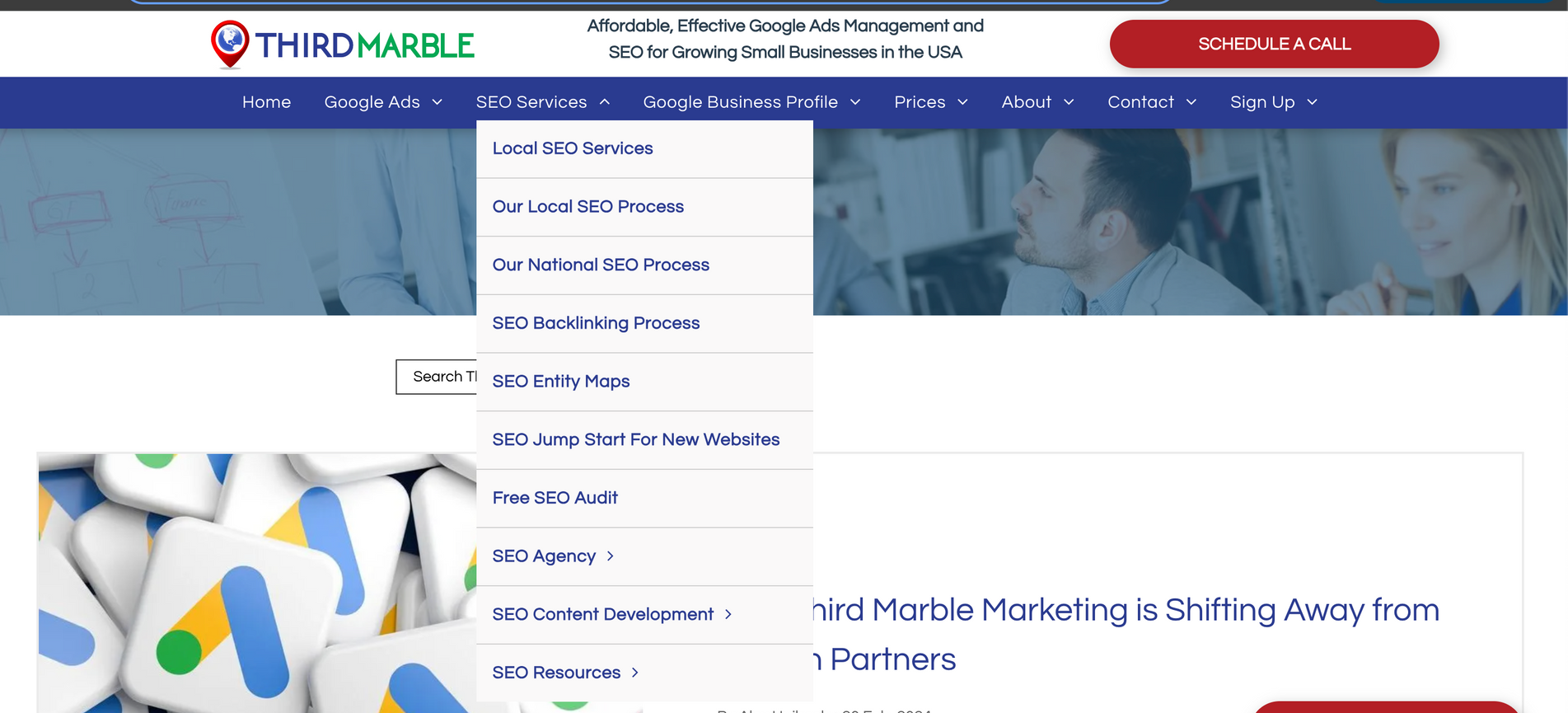
A click on each listing will bring the site visitor to that offering’s service page.
What Searchers Want to See
Once a service page is visited by a searcher, there are 5 Guiding Principles of design that will help you to maintain visitors' attention and urge further action to explore your solutions to their search. These Guiding Principles really come down to addressing what your visitors want to see.
Here’s a graphic presentation of the results of one study that addresses this issue.
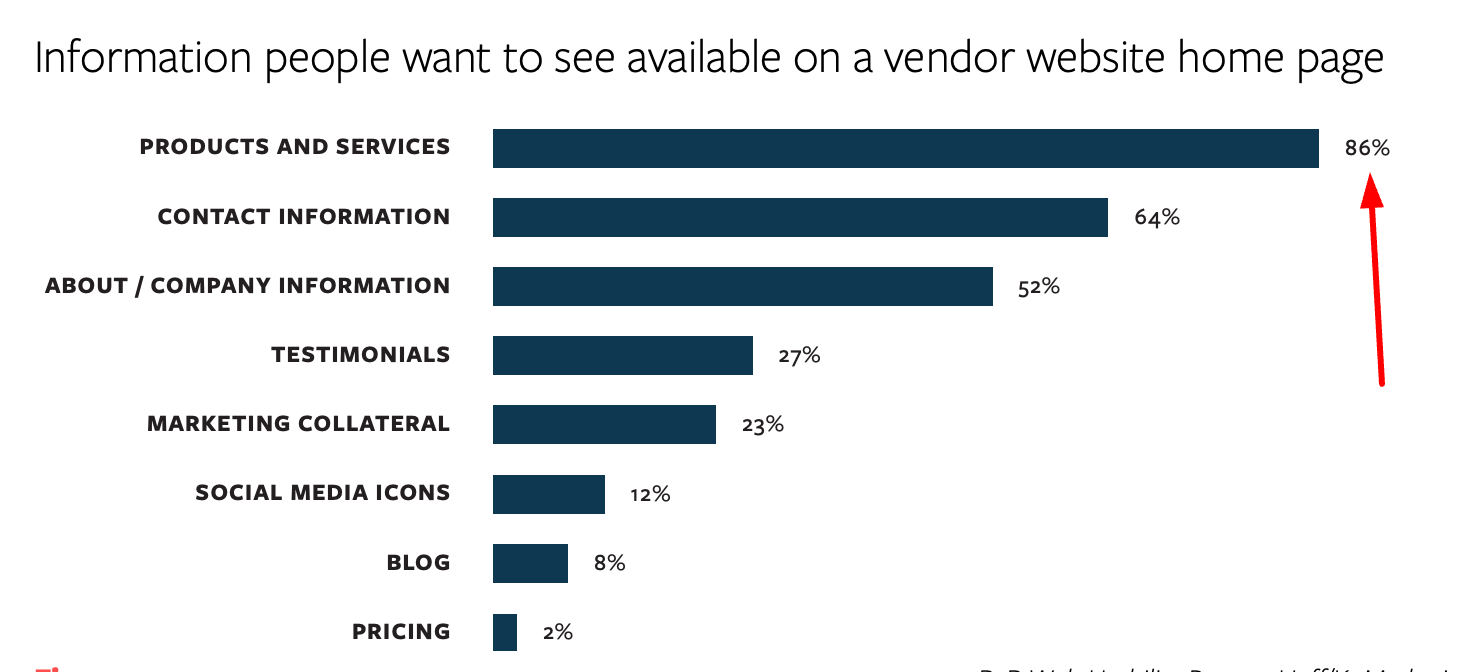
Lesson: Service pages are what 86% of potential customers want to see after landing on your homepage.
Successful Service Page Design … Five Guiding Principles
Here are best-practices to provide buyers with what they need to make purchase decisions.
1. Content Relevant to Their Immediate Need
As noted above, your service pages must be constructed to invite orderly next steps for your website visitors to identify the details of your offerings … with compelling demonstrations and evidence of how one or another will satisfy their needs.
So, don’t skimp on details. Be sure to include:
- Who is your customer? This is your ideal customer profile to help visitors know if they are in the right place at the right time. For example, the TMM service page for Local SEO for Small Businesses specifically identifies that it serves the needs of small, local business owners.
- Details of your offering(s). Address what your customers can expect when they buy. On the above TMM service page you will see pricing; no contracts and time expectations to optimize success.
- Show your understanding of customer problems. Again, referencing the above service page, Local search engine optimization for small businesses is very different than optimizing for national advertisers. Searchers need to know that you recognize the distinction and perform accordingly.
- Use motivating text. Position your offerings to trigger one or more of the 4 primary drivers of why people buy: save money; save time; make money; peace of mind. Important: Your prospects (as well as you and I) buy your product/service based on what it does … plus how it makes them feel. Appeal to both! Provide the details … example ... (make money) tied to positive feelings they will enjoy (peace of mind).
- Why choose you? Here’s where you need to tell your company’s history, customer-driven philosophy, unique delivery processes and staff competencies.
Don’t be concerned about the volume of your service page content. If you’re successful in winning a prospect’s attention to begin with more substantive information will answer many questions before becoming objections.
2. Visuals
Research reveals that 65 percent of Americans are visual learners. That means as buyers they best retain information by seeing it in images. As a matter of fact, people retain 80 percent of what they see … but only 20 percent of what they read. Lesson: Include screen shots, graphics, photos and videos on your service pages.
Here’s an example of a video on a service page that serves two purposes … a marketing visual plus a customer testimonial. Consider the power of a similar video ... an interview with one of your satisfied customers!
Another Small Business Grown with Google...
3. Appealing to the Eye … a Breeze to Navigate
As discussed above, most buyers seek visual representations of your service page content … not just text. Additionally, people are busy so be sure to address their need for speed. Consider this checklist:
- Prominent titles and sub-headings;
- Bulleted and highlighted key points;
- Short, written paragraphs and sentences with useful information and benefit statements;
- Visually attractive and tightly crafted ... margins, bullets, line spacing etc.;
- Rapid loading of your service page;
- Mobile friendly;
- Calls-to-Action (CTAs) options (more on that in a bit).
4. Proof/Evidence of Performance Successes
Two primary sources of proof of your capabilities are industry recognition and customer testimonials.
Here’s an example:

Click here for a sampling of customer testimonials and reviews. Note client emphasis on the 4 major drivers of why people buy.
An added proof of your competencies is to publish frequent blogs/articles that further bolster your image as an industry expert and thought leader.
5. Calls to Action (CTAs)
Give Customers What They Want to Make a Buying Decision.
Both you and your prospects win when a sale is made. So, continually urge “forward motion” to deliver on the opportunity to buy … or satisfy a next step in the decision process. That’s where clear and prominently displayed CTAs come into play.
Provide CTAs that are mindful of the desires of customers.
Here’s a graphic presentation of the results of one study that addresses this issue.

For prospects who are on the fence, offer a free consultation with a dedicated in-house professional. And make sure it’s at the prospect’s convenience … not yours. For example, here are 3 options to choose:

And for the prospect ready to convert to “customerhood” … make that transition a click away.

Takeaways
Give Customers What They Want to Make a Buying Decision. That means your success will be measured by customer-centric, clear, comprehensive, easy to find service pages crafted for each of your products/services … with proof of your competencies coupled with prominent access to CTAs. Above all make sure your service page content helps your prospects to understand what you offer, how you deliver and “what’s in it for them” … save money; save time; make money; peace of mind.
This piece is intended to provide an overview of service pages best practices to help strengthen your internet marketing decisions. It purposely is not written to “get into the weeds”. That said, consider enlisting the aid of a professional firm. There are behind-the-scenes items that need attention such as key word selection and placement, internal links and meta descriptions.
Third Marble stands ready to give you a hand … or an introduction to a professional who can.





